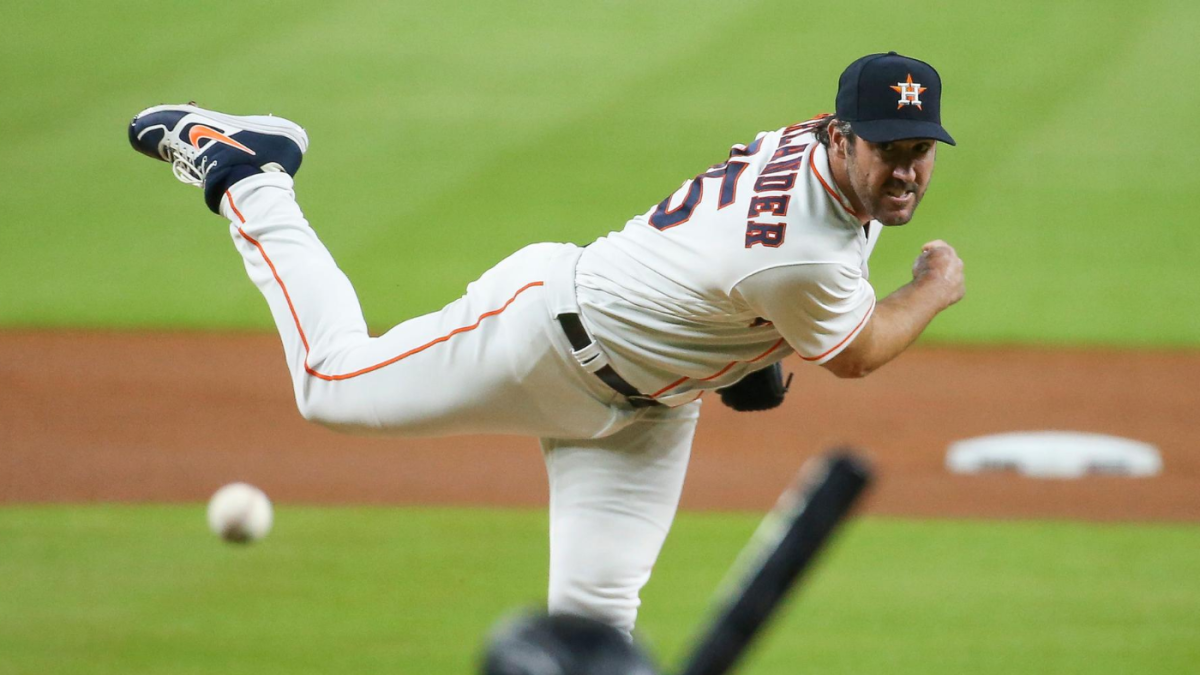As you might expect, the great names rise to the top.
This article will look at the most common (and well-known) stats for pitchers and drill down to explain what they mean, what they measure and how they’re calculated, and who the leaders are—past and present—in each category.
STAT: Earned Run Average (ERA)
You don’t need to know how to calculate ERA to understand what it tells you. It is the average (calculated) number of runs a pitcher gives up (or would give up) in a nine-inning game. It harkens back to a time when most pitchers attempted to pitch a full nine innings. Since it’s calculated the same for all pitchers, it’s an even scale. But…maybe not quite fair.
The key word is “earned.” Odd term, since it’s the other teams’ hitters who “earn” the runs with RBI. A runner who gets on base due to a fielder’s error and later scores isn’t counted as an earned run for the pitcher.
Some key points and drawbacks: If a pitcher leaves an inning with runners on base that he allowed, runs scored by those runners will count against his ERA. The reliever who “allows” those runs isn’t charged with giving them up.
Then there’s this: A hurler who pitches home games in a hitter-unfriendly park might give up fewer runs. Same goes for those who have a good defense behind them. Also, starting pitchers face more batters and pitch more innings than relievers do. Finally, the American League has the designated hitter, which means pitchers often face better hitters (not weak-hitting pitchers) with men on base. National League pitchers get to pitch to the opposing team’s starting pitcher, whereas AL pitchers pitch to an additional slugger in the lineup.
The formula: ERA = 9 x (number total earned runs)
number of innings pitched
Leaders in Earned Run Average (ERA) in 2020:
1. Shane Bieber, Cleveland 1.63
2. Trevor Bauer, Cincinnati 1.73
3. Dallas Keuchel, Chicago WS 1.99
4. Yu Darvish, Chicago Cubs 2.01
5. Dinelson Lamet, San Diego 2.09
Pitchers with the lowest ERA for a single season post-1920:
1. Bob Gibson, 1968 1.12
2. Dwight Gooden, 1985 1.52
3. Greg Maddux, 1994 1.55
4. Luis Tiant, 1968 1.60
5. Shane Bieber, 2020 1.62
STAT: Strikeout-to-Walk Ratio (K/BB)
Because starting pitchers rarely go nine innings now, they don’t rack up the strikeout season totals like they used to. Still, one valuable measurement is how many strikeouts (K) compared to bases on balls (BB) they give up. You get it by dividing the number of strikeouts by the number of walks.
A pitcher who struck out 10 and walked two would have a strikeout-to-walk ratio of 5.0, which is a good number. In 2016, Clayton Kershaw set a new record by striking out 172 batters while walking just 11, for a K/BB ratio of 15.6, an impressive number considering he pitched only 149 of the requisite 162 innings required for an official stat.
The formula: K/BB = (number of strikeouts)
(number of walks)
Leaders in Strikeout-to-Walk Ratio (K/BB) in 2020:
1. Marco Gonzalez, Seattle 9.14
2. Kyle Hendricks, Chicago Cubs 8.00
3. Kenta Maeda, Minnesota 8.00
4. Zack Greinke, Houston 7.44
5. Yu Darvish, Chicago Cubs 6.64
Pitchers with the best K/BB for a single season post-1900:
1. Phil Hughes, 2014 11.62
2. Brett Saberhagen, 1994 11.00
3. Cliff Lee, 2010 10.27
4. Curt Schilling, 2002 9.57
5. Marco Gonzalez 9.14
STAT: Quality Starts (QS) and QS%
You don’t need a calculator for this one. A pitcher is said to have a “quality start” when he goes at least six full innings and gives up no more than three earned runs. This term was created in 1985 by a Philadelphia sportswriter, John Lowe. Some people say if a pitcher loses during a quality start, that’s a tough loss. (If you want to do some math, divide the number of quality starts by the number of starts to get a QS percentage.)
The leaders in Quality Starts (QS) and QS% for 2019 (full season):
1. Gerrit Cole, New York Yankees 26 (79%)
2. Justin Verlander, Houston 26 (76%)
3. Shane Bieber, Cleveland 24 (73%)
4. Patrick Corbin, Washington 24 (73%)
5. Zach Greinke, Phoenix/Houston 24 (73%)
The all-time career leaders in Quality Starts:
1. Don Sutton 483
2. Nolan Ryan 481
3. Greg Maddux 480
4. Roger Clemens 465
5. Tom Seaver 454
(Gaylord Perry, Steve Carlton, Phil Neikro and Tommy Glavine are next in line.)
STAT: Walks and Hits Per Inning Pitched (WHIP)
In the late 1970s, writer Daniel Okrent (creator of rotisserie “fantasy” baseball) invented the term WHIP. WHIP is a measuring stick for pitchers that measures an average of how many hits and walks they give up per innings pitched. Clayton Kershaw is the all-time leader in WHIP (1.0) for the modern era. It doesn’t matter if those hits are singles or homers. Errors, hit batters and fielder’s choices aren’t factored in. To get the number, add the number of hits and walks a pitcher has given up and divide the sum by the numbers of innings pitched.
The formula: WHIP = BB + H
IP
Pitchers with best Walk and Hits Per Inning Pitched (WHIP) in 2020:
1. Kenta Maeda, Minnesota 0.75
2. Trevor Bauer, Cincinnati 0.79
3. Dinelson Lamet, San Diego 0.86
4. Shane Bieber, Cleveland 0.87
5. Marco Gonzalez 0.95
Here are the all-time career leaders for WHIP since 1920:
1. Mariano Rivera 1.000
2. Clayton Kershaw 1.003
3. Chris Sale 1.03
4. Jacob deGrom 1.04
5. Pedro Martinez 1.05
Resources: mlb.com/glossary; espn.com/mlb/stats; wikipedia.org/wiki/Strikeout-to-walk_ratio; baseballrefernce.com; history.com/modern-er

